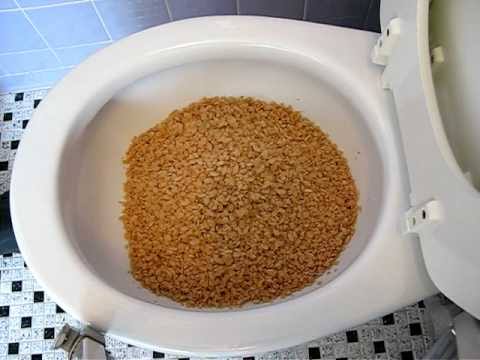Is it Allowed to Flush Food Down the Toilet?
Is it Allowed to Flush Food Down the Toilet?
Blog Article
Were you hunting for information and facts on Flushing Food Down the Toilet??

Introduction
Many people are frequently faced with the problem of what to do with food waste, especially when it pertains to leftovers or scraps. One typical question that emerges is whether it's alright to purge food down the toilet. In this post, we'll delve into the reasons that people may take into consideration flushing food, the effects of doing so, and different methods for appropriate disposal.
Reasons that individuals could consider flushing food
Lack of awareness
Some individuals may not understand the prospective harm brought on by purging food down the commode. They may incorrectly think that it's a harmless technique.
Benefit
Flushing food down the bathroom might seem like a quick and easy service to dealing with undesirable scraps, specifically when there's no close-by trash bin readily available.
Idleness
Sometimes, individuals might just pick to flush food out of sheer idleness, without thinking about the effects of their actions.
Repercussions of flushing food down the commode
Environmental effect
Food waste that ends up in waterways can contribute to air pollution and injury aquatic communities. Additionally, the water made use of to purge food can strain water resources.
Pipes concerns
Purging food can bring about blocked pipes and drains, triggering expensive pipes fixings and troubles.
Sorts of food that should not be purged
Fibrous foods
Foods with coarse structures such as celery or corn husks can obtain tangled in pipelines and cause obstructions.
Starchy foods
Starchy foods like pasta and rice can take in water and swell, bring about obstructions in pipelines.
Oils and fats
Greasy foods like bacon or cooking oils must never ever be flushed down the bathroom as they can solidify and create blockages.
Appropriate disposal techniques for food waste
Using a garbage disposal
For homes outfitted with waste disposal unit, food scraps can be ground up and flushed via the plumbing system. Nonetheless, not all foods are suitable for disposal in this fashion.
Recycling
Specific food packaging materials can be recycled, minimizing waste and reducing ecological impact.
Composting
Composting is a green way to throw away food waste. Organic materials can be composted and utilized to enrich soil for gardening.
The value of correct waste administration
Lowering environmental harm
Proper waste management methods, such as composting and recycling, aid reduce pollution and protect natural resources for future generations.
Protecting plumbing systems
By staying clear of the practice of flushing food down the commode, homeowners can avoid pricey pipes repair services and keep the honesty of their plumbing systems.
Final thought
To conclude, while it might be alluring to purge food down the bathroom for convenience, it is very important to comprehend the prospective consequences of this activity. By taking on appropriate waste monitoring techniques and throwing away food waste properly, people can contribute to much healthier plumbing systems and a cleaner setting for all.
FLUSH FOOD DOWN THE TOILET?
FLUSHING FOOD CAN CAUSE BLOCKED DRAINS IN YOUR HOME
All of the plumbing fixtures in your home are connected to the same sewer pipe outside of your home. This outdoor sewer pipe is responsible for transporting all the wastewater from your home to the Council sewer mains. Even small pieces of food that go down the kitchen sink can cause problems for your sewer. It should therefore be obvious that flushing larger bits of food, such as meat, risks a clog in either the toilet itself or the sewer pipes. Flushing greasy food is even more problematic because oil coagulates when it cools, coating the interior lining of your pipes.
THE TOILET IS NOT A BIN
Food isn’t the only thing that people shouldn’t be flushing down the toilet. People use the toilet to dispose of all kinds of things such as tampons, makeup wipes, dental floss, kitty litter and even underwear. Water goes to great lengths to educate residents about the high costs and stress placed on wastewater treatment systems simply from people flushing the wrong stuff down the toilet. It costs taxpayers millions of dollars each year, and homeowners thousands in blocked drain repairs.
FLUSHING FOOD IS A WASTE OF WATER
Flushing food is a waste of our most precious resource - water. In June this year Level 1 water restrictions were introduced to protect water supply from drought conditions. Much of New South Wales continues to be affected by prolonged drought with recent figures revealing up to 97 per cent of the state remains in drought. Depending on whether you have a single or dual flush toilet, every single flush uses between five and 11 litres of water. In the current climate this is a huge amount of water to be wasting on flushing food that should be placed in the bin (or better yet, the compost).
https://www.jabplumbingsolutions.com.au/blog/can-you-flush-food-down-the-toilet

Hopefully you enjoyed our article on What Can Happen If You Flush Food Down the Toilet?. Thanks a lot for taking time to browse our content. Are you aware of another person who is interested in the niche? Please feel free to share it. Thank you for going through it.
Schedule Services Report this page